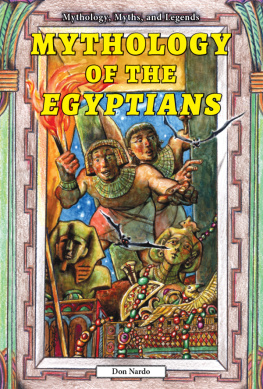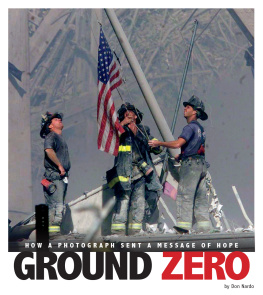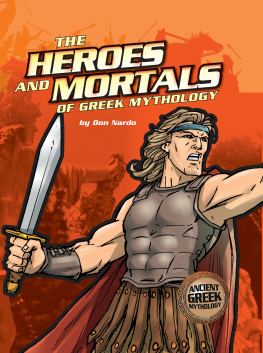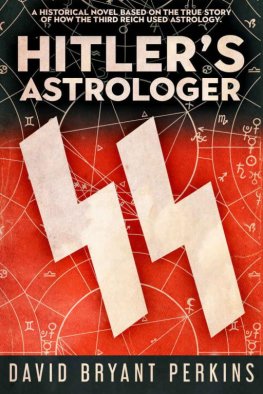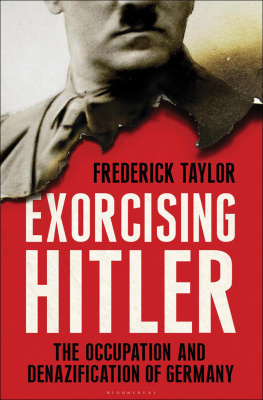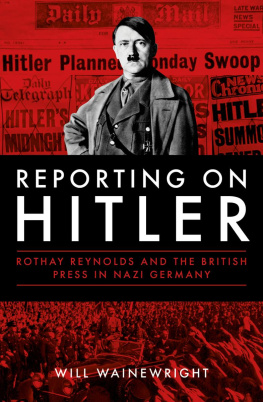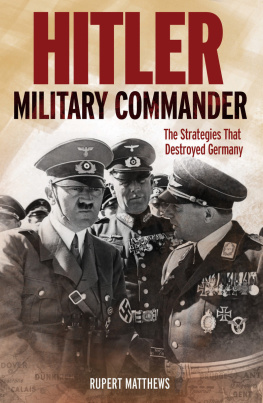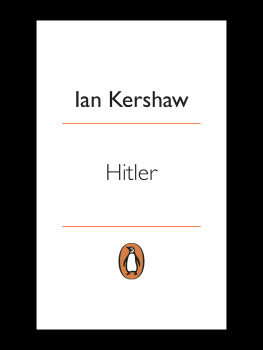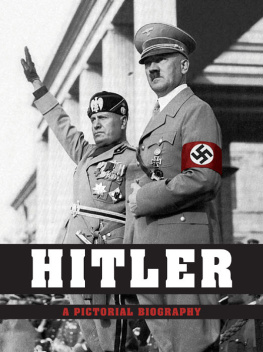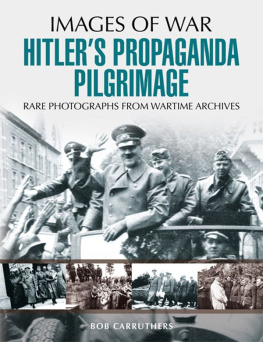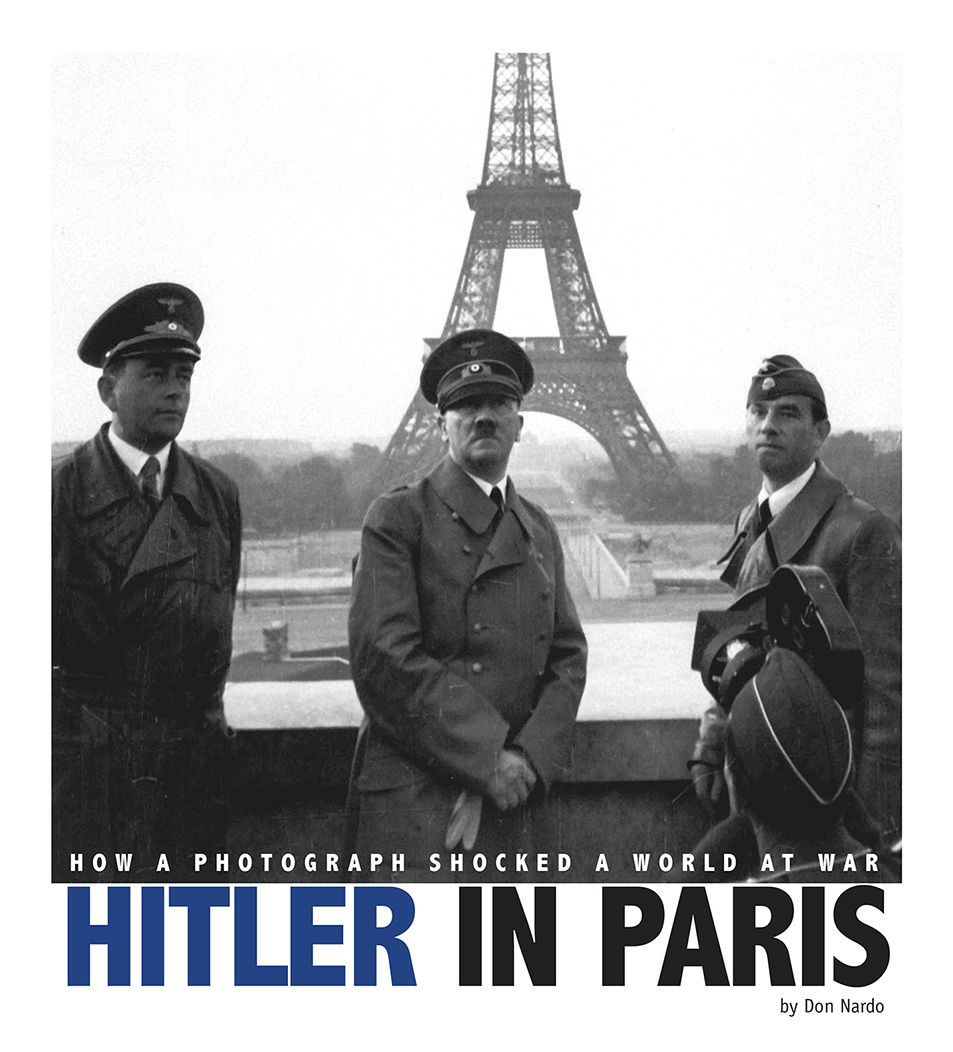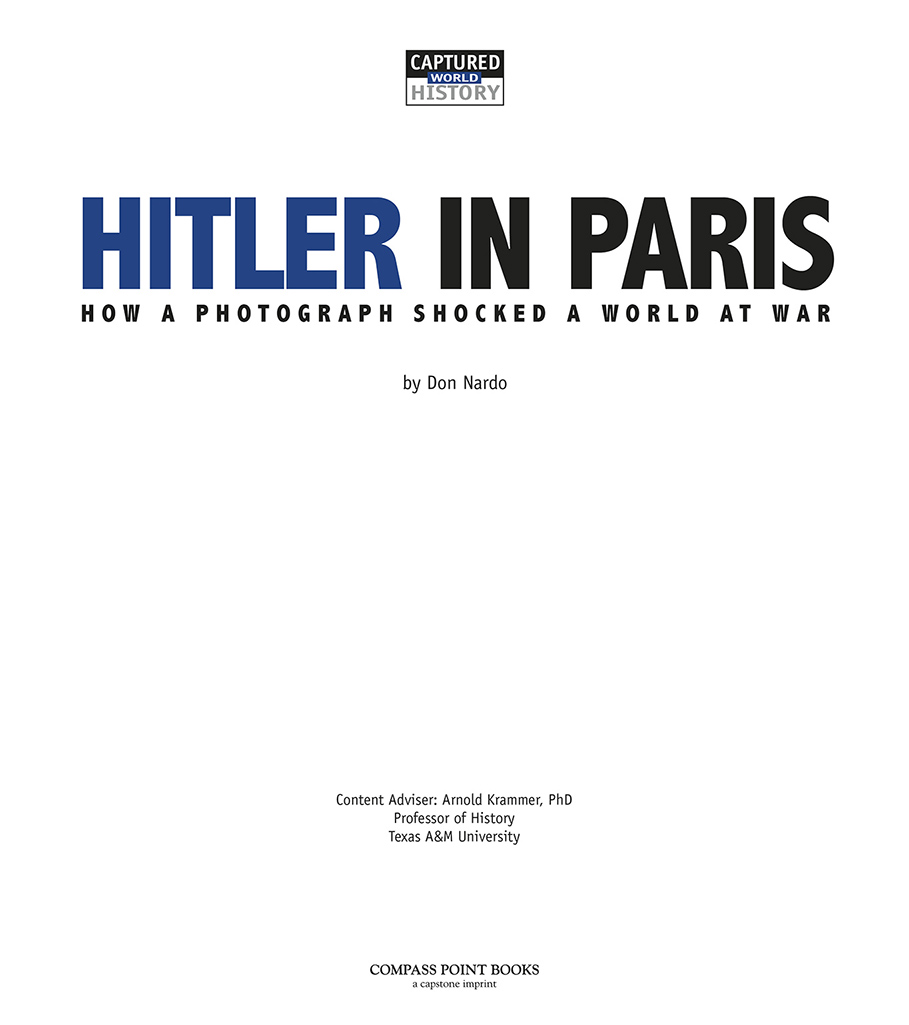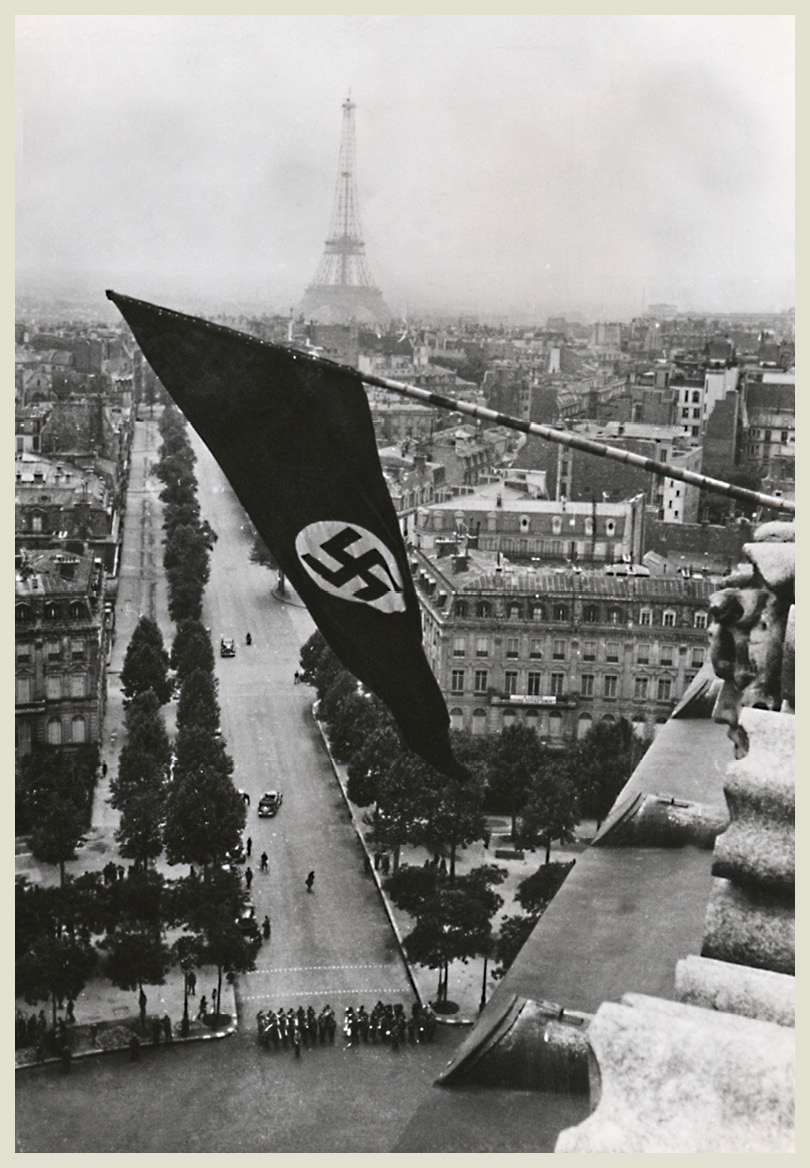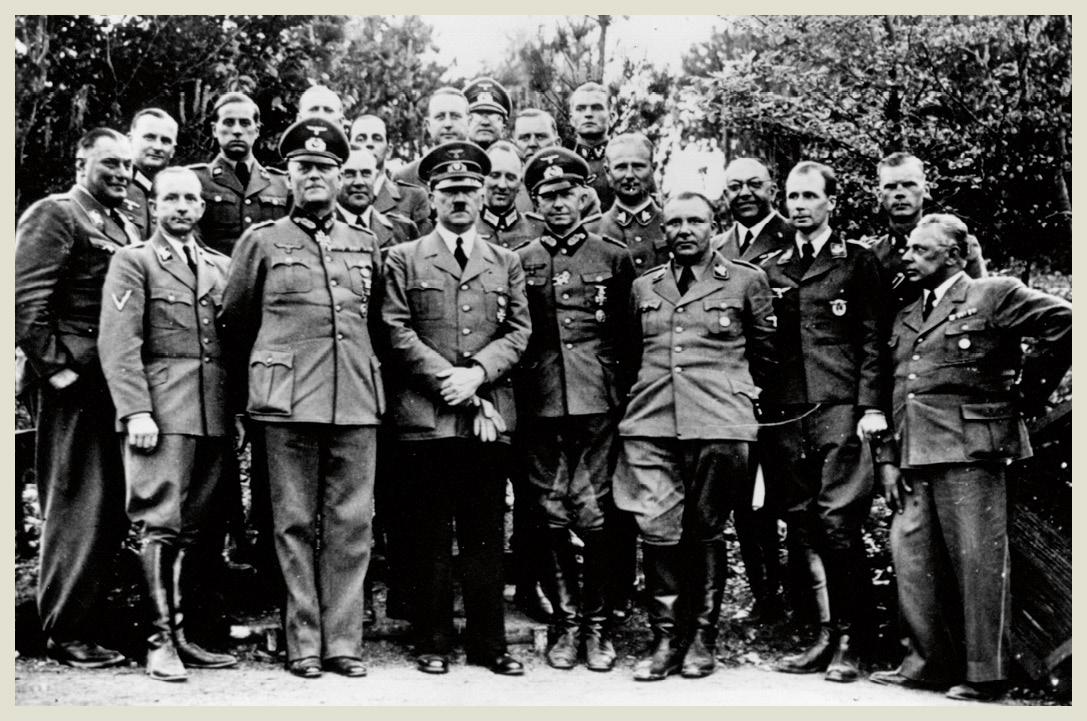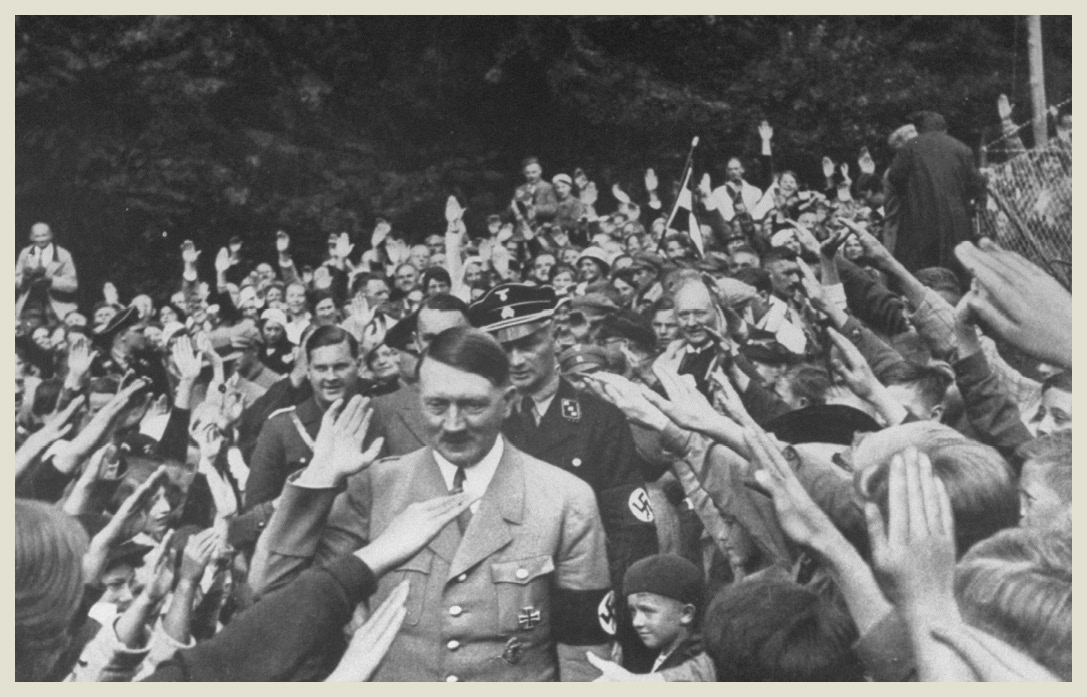Chapter One
AN EARLY MORNING IN PARIS
It was nearly 5:30 in the morning of June 28, 1940. A dim deep-orange predawn glow hung above the eastern horizon. The nighttime runway lights, intended to guide planes to safe landings in the dark, were still lit at Paris Le Bourget airport. A handful of airfield ground crew members waited on the tarmac. Watching them closely were several dozen well-armed German soldiers.
A Nazi flag flying from the Arc de Triomphe was a constant reminder of the German occupation of Paris.
A few minutes later, all present heard the distant drone of an approaching planes engines. Scanning the sky, they made out its lights and watched as it descended. After landing smoothly, the aircraft taxied to the terminal. Some of the German soldiers hurried over and stood guard over a small group of men getting off the plane. Without fanfare, the new arrivals walked to three waiting Mercedes sedans.
Ten minutes later, the cars, their headlights still on, motored quietly through the streets of one of Paris large suburbs. Among the passengers was a 54-year-old German photographer, Heinrich Hoffmann. According to an acquaintance, he was a short, comfortably tubby little man with a pair of bright, merry, and quickly twinkling eyes. Hoffmann, then Germanys most commercially successful photographer, had the hands of an artist, the acquaintance recalled.
Accompanying Hoffmann were other notable German artistic figures. One was the bold and talented architect Albert Speer. Also present was fellow architect Hermann Giessler and the noted German sculptor Arno Breker.
A fifth man rode with the others. Both outside and inside the cars, Hoffmann and the others showed unusual respect for him. There was good reason. He was Germanys reigning dictator and head of the Nazi regime that controlled their country.
Adolf Hitler, like his personal photographer, Heinrich Hoffmann, was shortabout 5-foot-8 (173 centimeters). Unlike Hoffmann, however, Hitler was physically unattractive. He was painfully aware that his nose was too big for his face. He tried to offset it by wearing a narrow but bushy mustache, which remained his signature for the rest of his life.
Heinrich Hoffmann (far right) with Adolf Hitler (third from left) and Hitlers staff in June 1940
Added to Hitlers physical quirks were some odd and at times frightening personality traits. He had a terrible temper, which made him prone to violent tantrums. At times he displayed a warped sense of humor. He often poked fun at deaf people and amputees. A more developed aspect of this cruel streak was his deep hatred of people of certain races and ethnic groups. At the top of his hate list were Jews. But he abhorred Slavs, blacks, nomadic people called Gypsies, and many others nearly as much.
Hitlers negative traits made him physically unimpressive and at times repulsive or even scary to be around. Yet he also had qualities that had plainly helped him achieve his success as a national leader. Hoffmann, who knew him for more than 20 years, called him a charming and witty conversationalist. Hitler also had a striking intensity and zeal for certain ideas, projects, and goals. He was known to home in on a problem and relentlessly pursue a solution.
Hitler also showed a tremendous confidence in himself. This stemmed from his view that he was meant to play a key role in humanitys destiny. Hitler firmly believed that he had been chosen by Fate, Hoffmann later wrote, to lead the German people to hitherto undreamed of heights; and his rise to power as dictator of Germany only strengthened this belief. So whether one liked or disliked Hitler, his all-consuming passion for his interests and beliefs, combined with his power as dictator, made him impossible to ignore.
Hitler had an uncanny ability to make other people share his interests and beliefs. He was able to sway a crowd in ways that most public speakers could only dream about. This talent had helped him to manipulate the German people during the 1920s and 1930s. He convinced them that he could solve their problems, and with their backing he cleverly used the nations political system to obtain absolute power.
Hoffmanns camera captured an enthusiastic crowd saluting Hitler in 1936.
Once he had gained supreme authority, however, Hitler ruled through brutal means. His words, and even his whims, carried the force of law. Few people dared to object, and those who did were severely beaten or murdered. His control over society was so total that he personally dictated the standards for literature, architecture, sculpture, and music. He even decided the colors artists could use in paintings, Williams College professor Robert Waite wrote. Also up to him were the way lobsters were to be cooked in restaurants, and how physics would be taught in the universities. He decided whom Germans might marry, what they could name their children, where they could be buried, Waite wrote. At his command thousands of young soldiers died in hopeless battle, many with his name on their lips. On his orders millions of people were tortured, maimed, murdered.
Hitler became so powerful, esteemed, and feared that most Germans called him simply the Fhrer, meaning great leader. His sweeping authority was mostly based on his command of Germanys extensive armed forces. They had recently swept into Poland, starting a conflict that would soon become known as World War II.
Next Hitlers lethal war machine had smashed its way into western Europe and invaded Germanys longtime archenemy, France. Only 22 years earlier, France and the other Allies had defeated Germany in World War I (19141918). Now the tables were turned. Germany invaded France, and unprepared for the onslaught, French defenses had crumbled. With nothing to stop them, thousands of German troops had entered Paris on June 14, 1940, an event that had shocked the world. To make sure none of the Parisians doubted they were beaten, German soldiers climbed to the top of the famous Eiffel Tower. There they unfurled the Nazis red and black flag, bearing their dreaded symbolthe swastika.
Excited over his triumph, Hitler decided to visit the French capital. He ruled out staging a victory parade. That, he reasoned, would come later. Instead the visit would be short, quiet, and discreet. An avid lover of large-scale architecture, he strongly desired to see Parisian landmarks. In particular, he was eager to tour the citys renowned opera house, the Palais Garnier. Like many other tourists, he also wanted to ride to the top of the Eiffel Tower.
FAVORITE ARTISTS
On his short but historic trip to Paris, Hitler took along three of his favorite artistsAlbert Speer, Hermann Giessler, and Arno Breker. Speer (19051981) was Germanys most renowned architect during the Nazi era. He also served as Hitlers minister of armaments and war production. During World War II, at Hitlers request, Speer prepared elaborate plans to create a new, much larger and grander Berlin, featuring several enormous government structures. Thanks to Nazi Germanys collapse in 194445, these were never built. After the war, Speer served 20 years in prison for his involvement in Hitlers regime.


